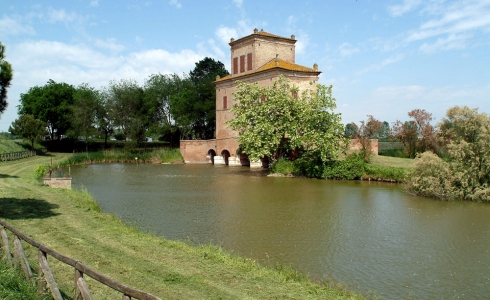



Quite unaware of its origin, people have consumed food that is produced in the northern Italian region, Emilia-Romagna. Who has not become acquainted with Aceto Balsamico, this noble vinegar produced from 12 years stored wine in Modena?
Who has not grated Parmigiano Reggiano cheese over pasta, perhaps without realizing that this wonderful cheese is not only matured for 2 years, but also that it may be produced under strict control, in a restricted area of the region? Who has not eaten with great pleasure the Prosciutto from Parma or tasted the red Lambrusco sparkling wine?
These are just a few examples of the importance of the region Emilia-Romagna when it comes to food and gastronomy at a high level. Visit Bologna and taste…
When it comes to wine, the region has an unusual size and not least from the name one can sense the differences. Every inhabitant would consider themselves either Emilians or Romagnans. Never both.
The same thing you see with the wine, which is not similar to any of the neighbors, not even each other within the region. Doing it that way is almost a virtue.
The region’s wine history dates back 2500 years ago. Later, the Romans named both sides of the region Romagna because of the long domination over that area, Emilia because of the vital trade route between Rimini and Piacenza, which bore the name Via Emilia. The route proved particularly useful, as it connected regions under countless political disputes.
The evolution of wines in this area is rather unclear (each having its own separate way) and so is the moment when the actual wine production started in Emilia-Romagna. We do know, however, that the Ligurians, the early inhabitants of the forest areas between the Po Valley and Apennines, were known to grow wine in the west, and that the Umbrians were also wine growers. Finally, we also know that the Etruscans understood the art of systemized wild grapes cultivation said to have culminated with the red, sparkling wine Lambrusco.
Bologna is both literally and figuratively the center of Emilia-Romagna, which extends almost across the entire Italy, from the Adriatic Sea in the West, across the flat Po River valley and going South, into the Apennines. In fact, the region can be divided in two, although the boundaries are not clearly defined.
Emilia is located in the west and includes the main cities of Modena, Reggio, Parma and Piacenza. This part of the region is well known for the production of the Lambrusco sparkling wine, which is appreciated by wine lovers and hated by wine snobs. Generally, the wine produced in this part of the region is sweet, which is the reason why there is no emphasis on classification and origin.
Romagna is located in the east and stretches from the Adriatic Sea, west of Ferrara, going south towards Faenza, through Forli, Ravenna, Cesena to the sea at Rimini. This area concentrates mostly on still wine and, besides the well-known wine varieties, includes some local curiosities.
Building a reputation as quality wine producers is of great importance in Romagna. This may be observed through the wine labels carrying the Romagna name, although the association of the name with the white wine Albana di Romagna DOCG is not a fortunate one since the wine having provoked many raised eyebrows in the Italian wine circles. The gossips claim that actually the laughter from the DOCG appointment of the Albana di Romana in 1987 has never subsided, but nevertheless, great efforts are made to reduce the laughter to silence.
Emilia-Romagna includes 20 DOC zones, including one DOCG represented by the aforementioned white wine Albana di Romagna DOCG. However, discovering wines in the region may be a challenge, because for every zone there are several subzones where the requirements are different. For example, the Colli Bolognese zone has 7 subzones and so on. But stay calm, you will learn about all of them here at the Italian Wine Guide.
Read more about the wines from Emilia-Romagna by clicking i the top menu in the right side.
Italy extends over 10 latitudes – from continental climate to subtropical climate?